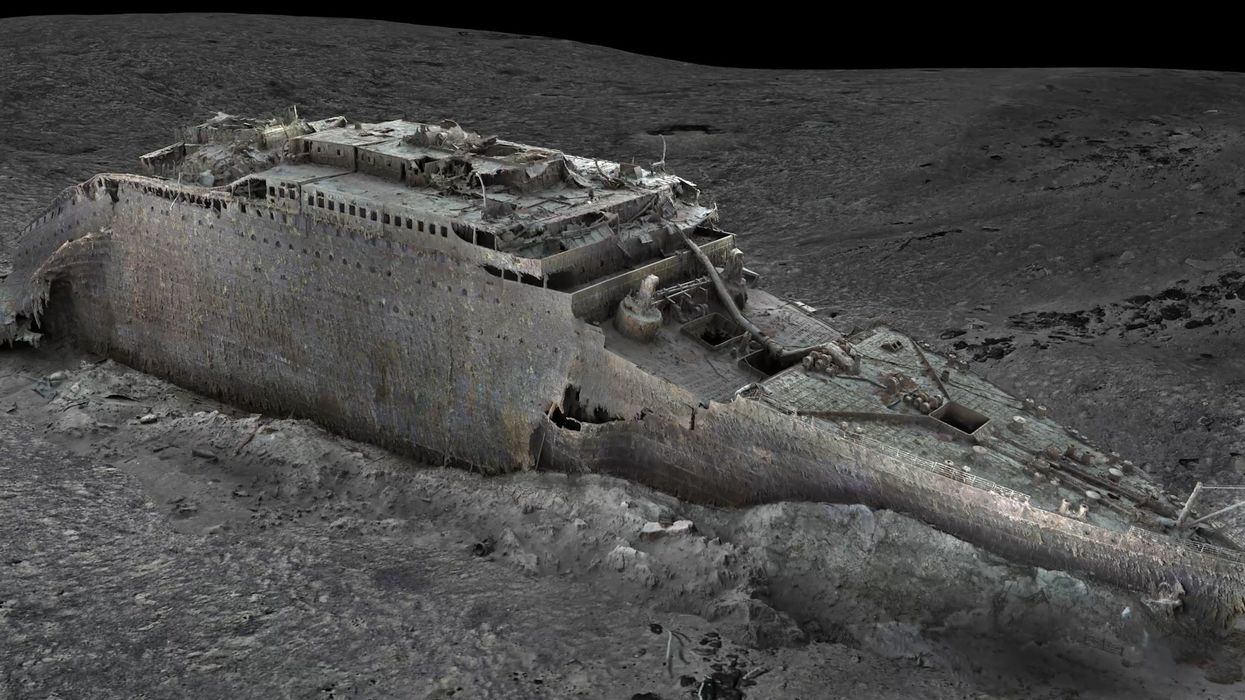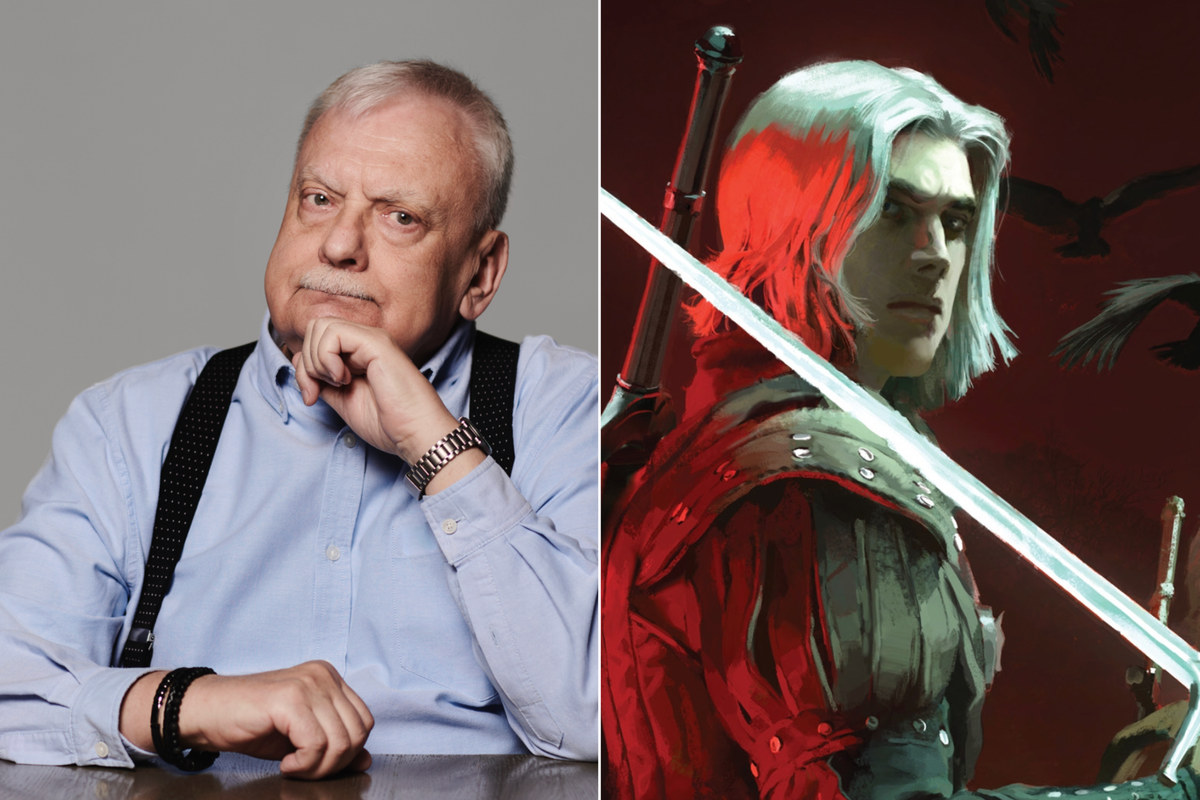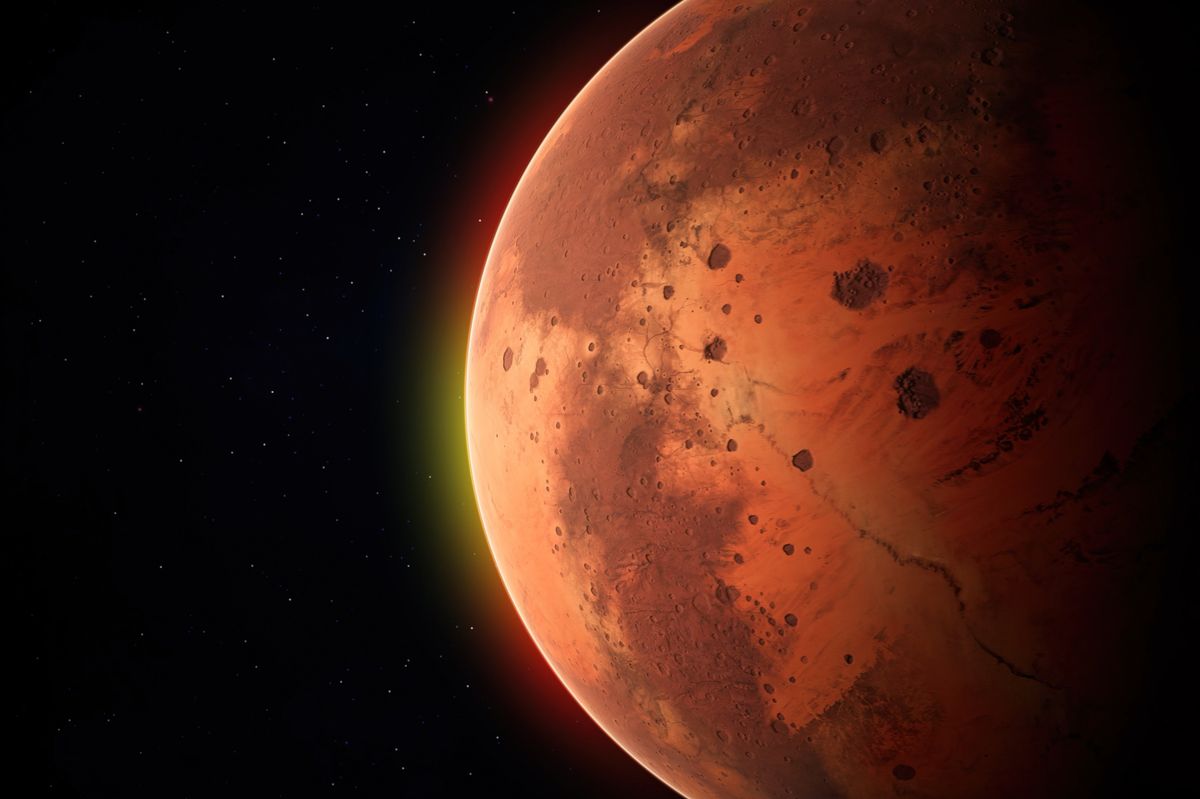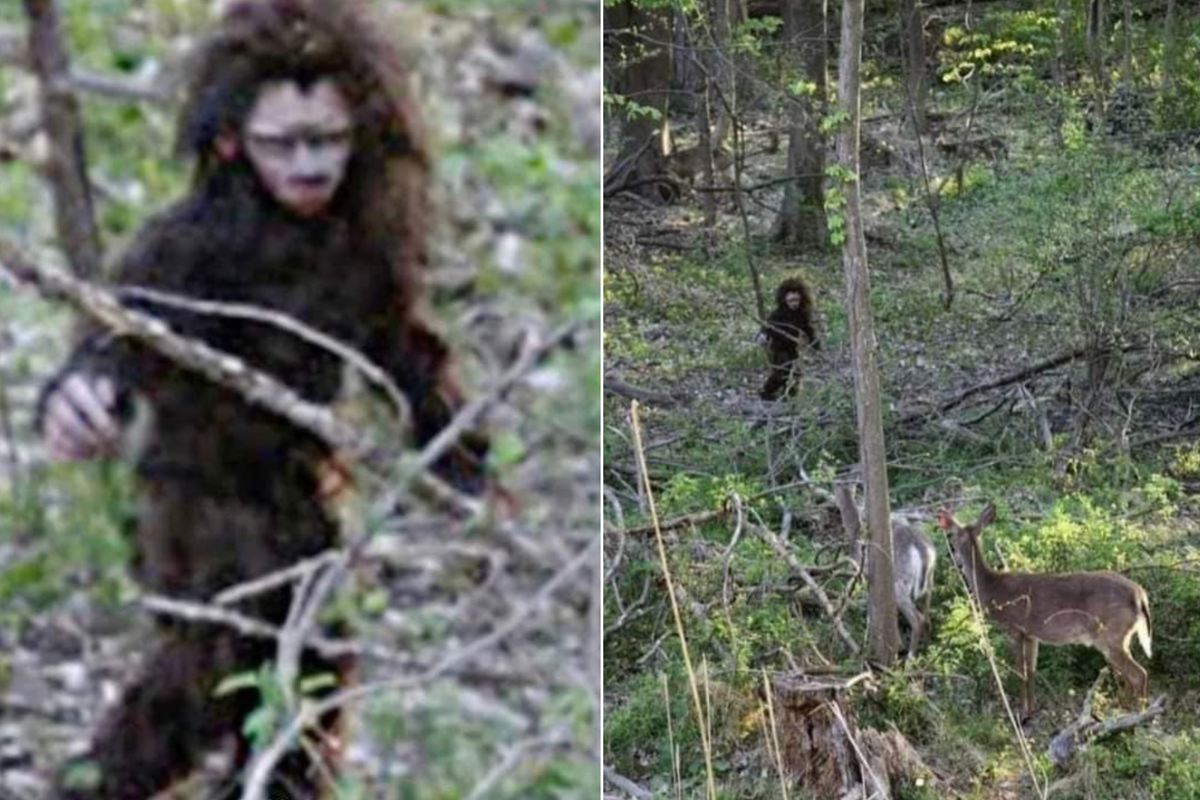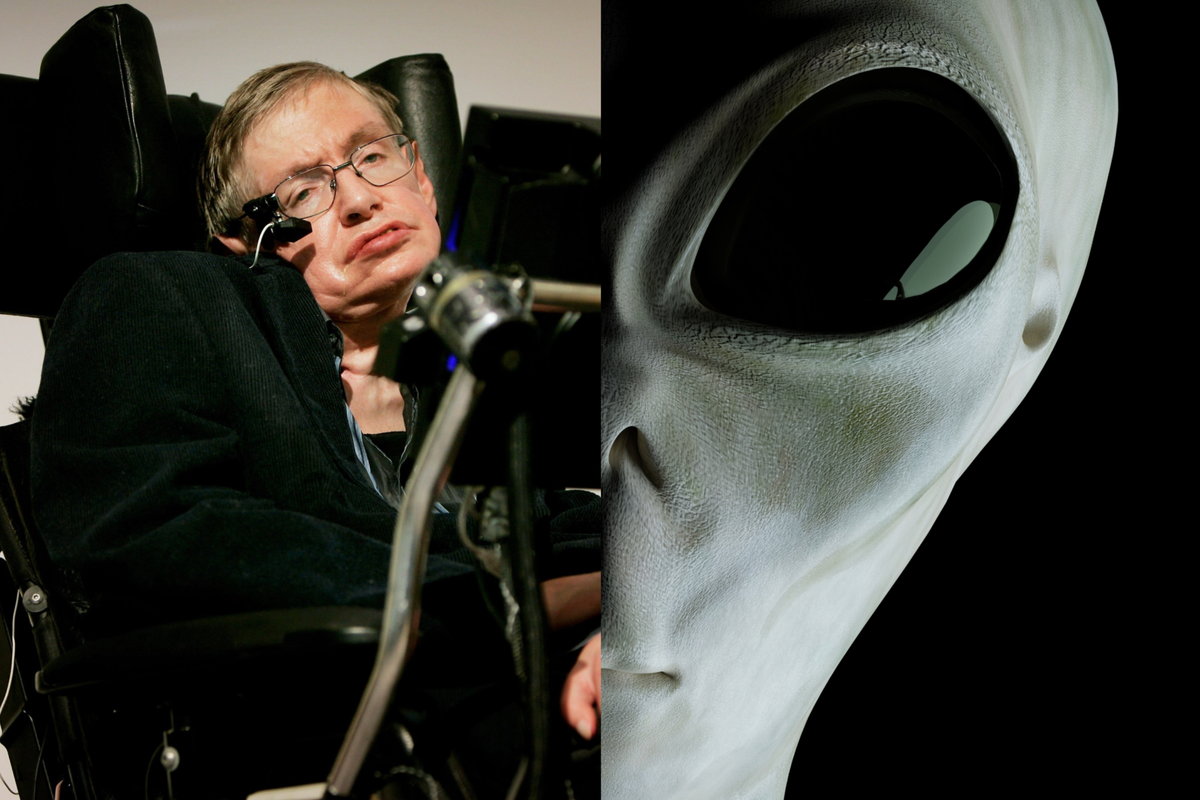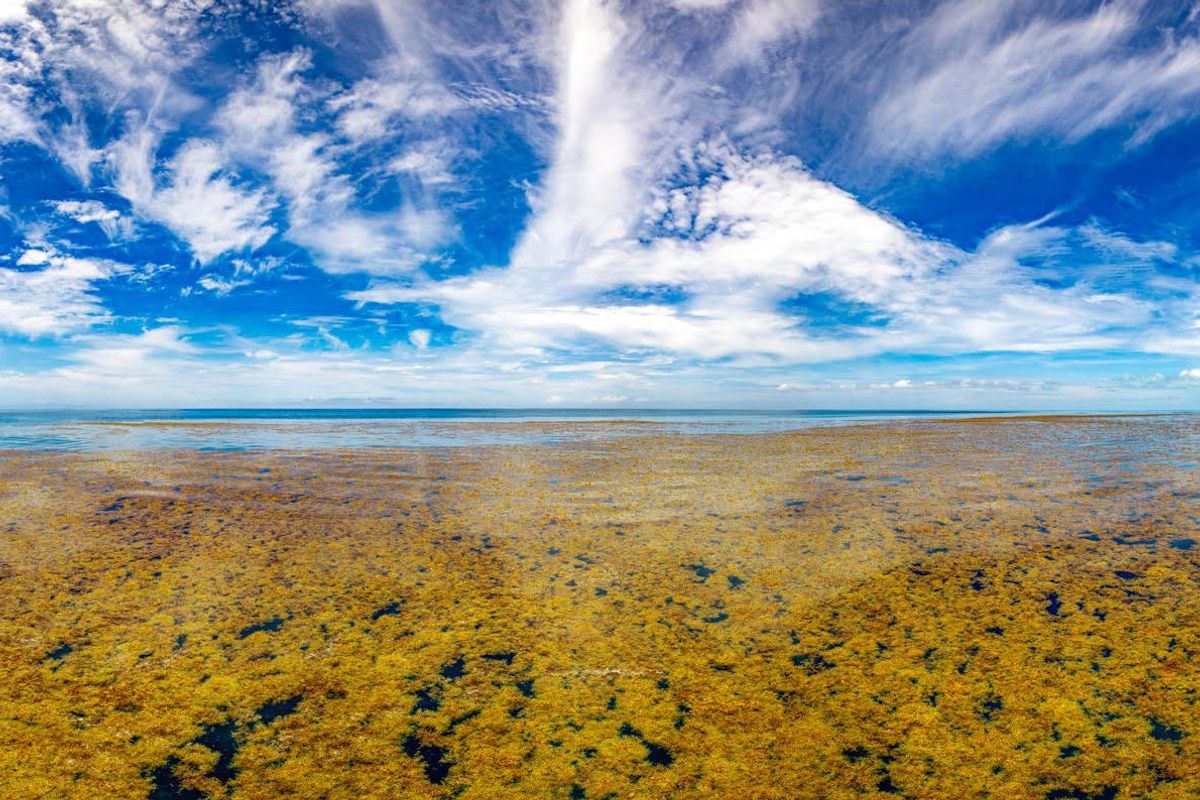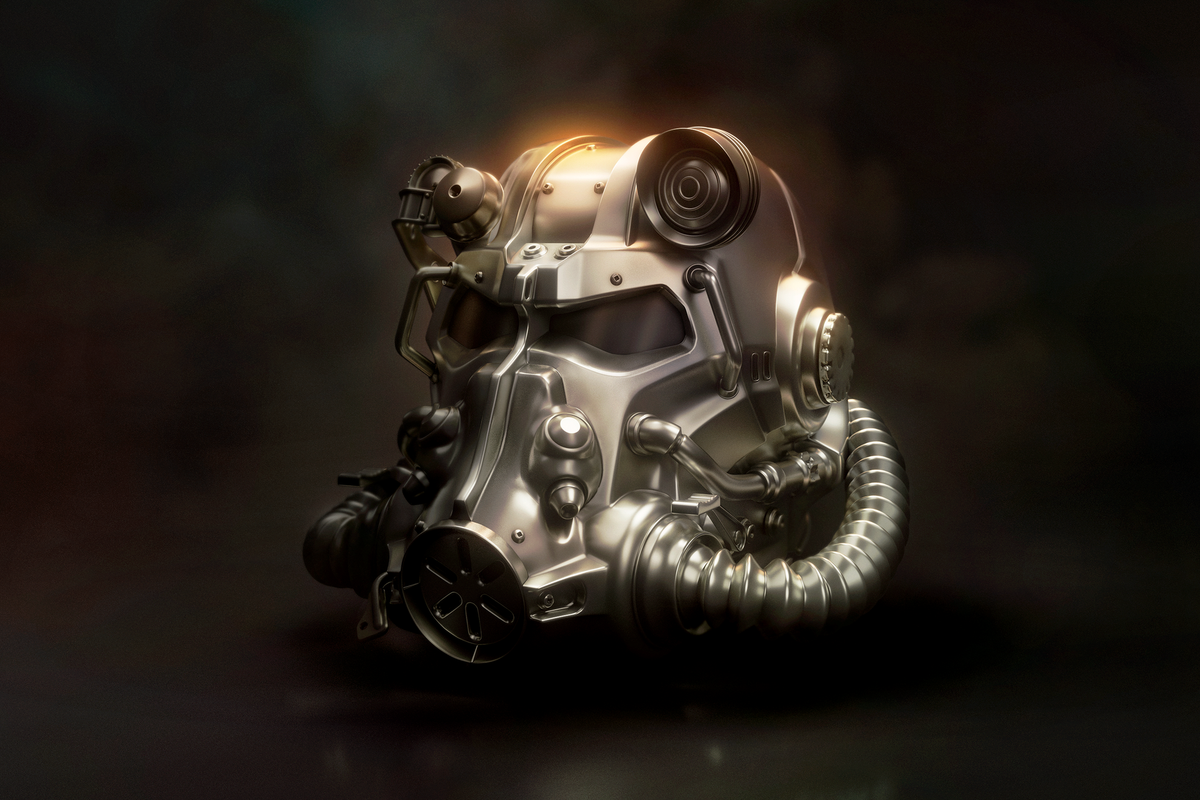Ellie Abraham
May 26, 2023
Titanic: First-ever full-sized 3D scan reveals shipwreck as it is now
content.jwplatform.com
A lost necklace from the wreckage of the Titanic has been recovered more than 100 years after the iconic ship sank.
The necklace has been seen by human eyes since the RMS Titanic sunk in the North Atlantic Ocean on 15 April 1912 after colliding with an iceberg.
The discovery was made by the Guernsey-based firm Magellan, who undertook the first full-sized digital scan of the wreckage which is located around 400 nautical miles from Newfoundland, Canada.
The underwater scanning project of the luxury passenger liner is the largest ever undertaken and took the expertise of deep-water investigations specialists.
Experts used two submarines to take 700,000 images of the underwater ship that they then combined to create a moveable scan image
Appearing in some of the images was a gold necklace featuring the tooth of a Megladon – an extinct pre-historic shark and the largest shark to have ever lived.
Sign up to our free Indy100 weekly newsletter
Unfortunately, due to a pre-existing agreement, artifacts are not allowed to be removed from the wreckage.
However, the team that made the discovery is now on a mission to find out the identity of the necklace owner.
By using artificial intelligence, the team is contacting the family members of the 2,200 passengers who were onboard.
They are also using AI and facial recognition to monitor footage of passengers boarding the ship in the hopes they catch a glimpse of the jewellery being worn by its owner.
Richard Parkinson, CEO of Magellan, said: “What is not widely understood is that the Titanic is in two parts and there's a three-square-mile debris field between the bow and the stern.
“The team mapped the field in such detail that we could pick out those details.”
Have your say in our news democracy. Click the upvote icon at the top of the page to help raise this article through the indy100 rankings.
Top 100
The Conversation (0)
